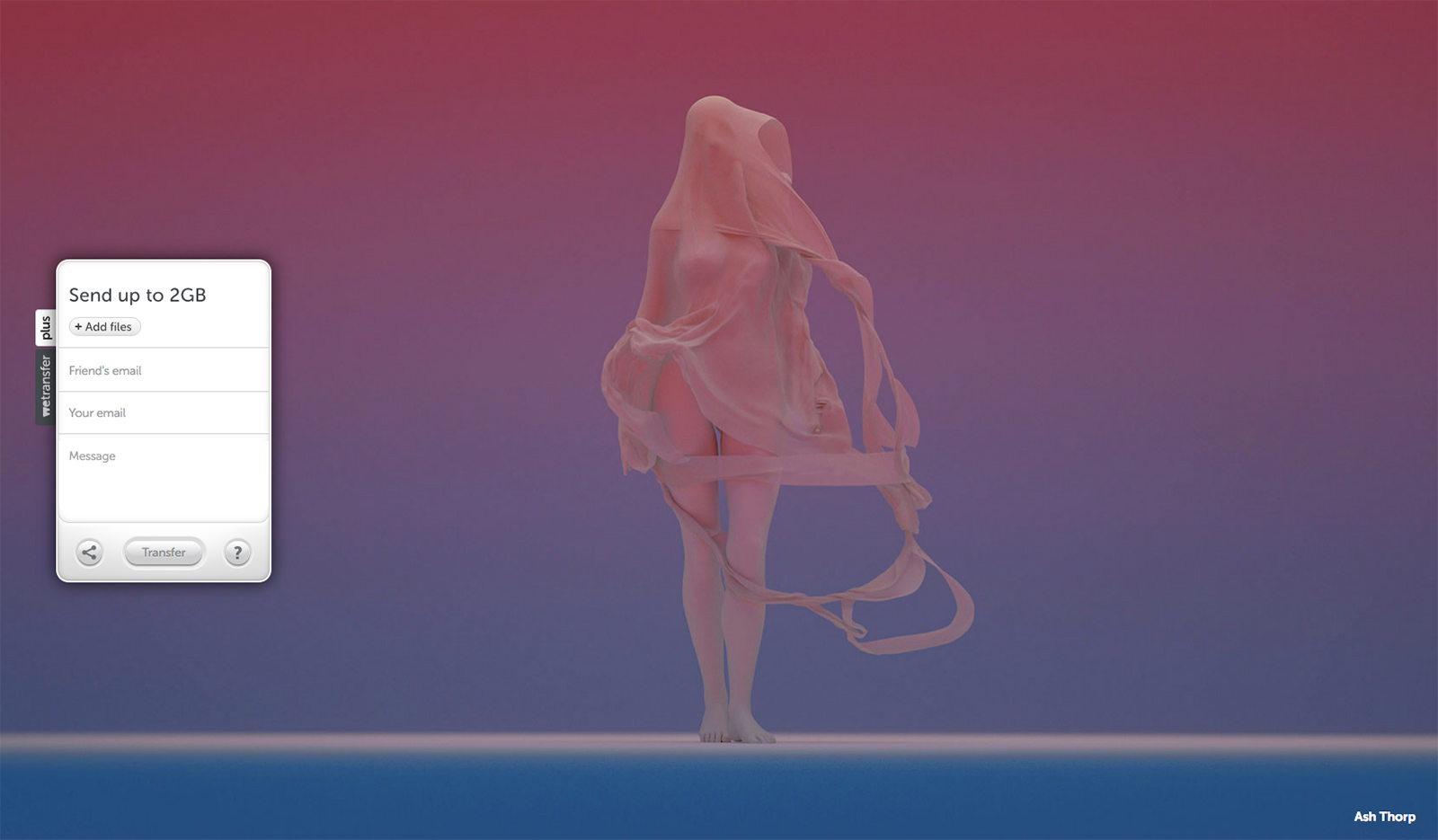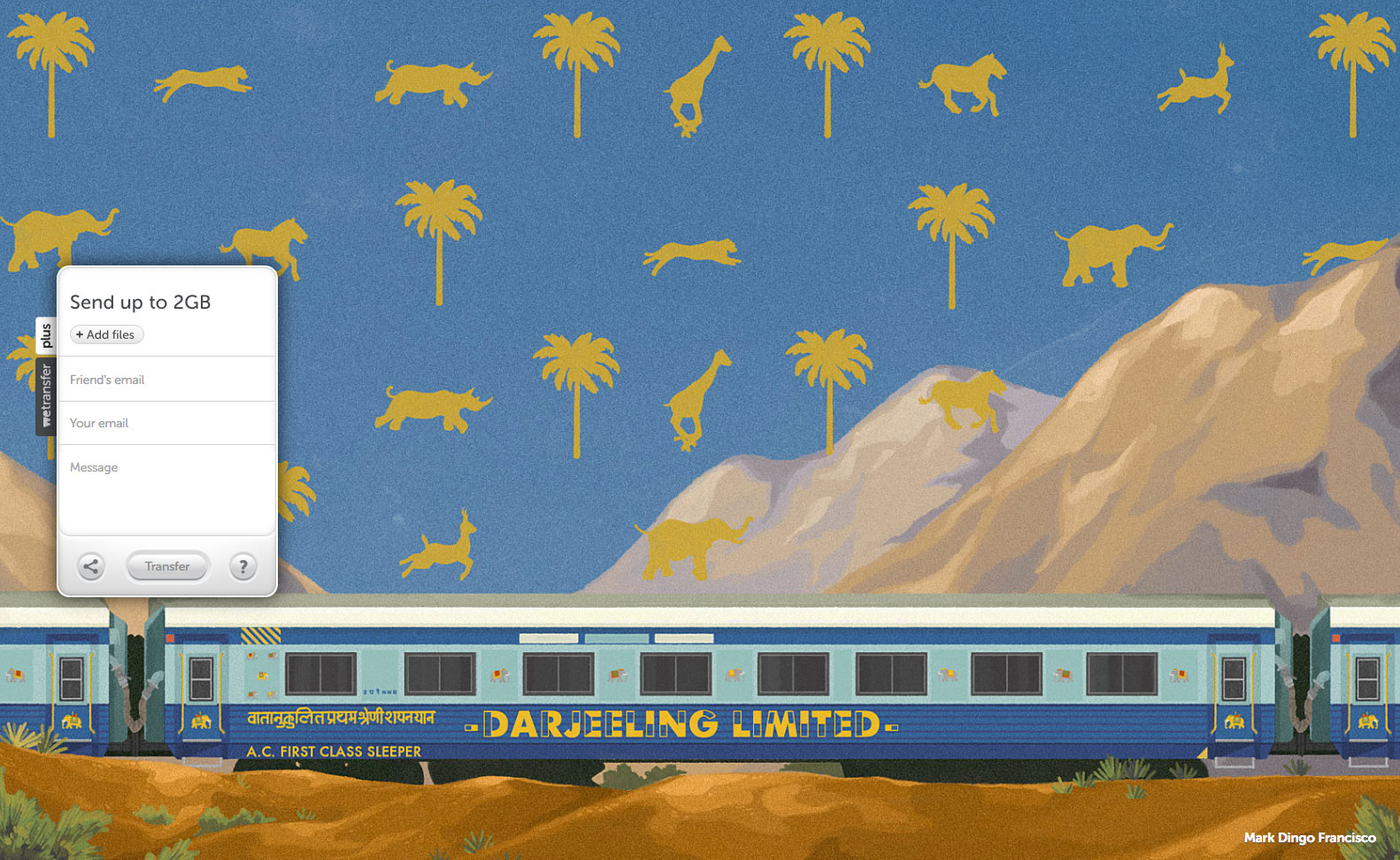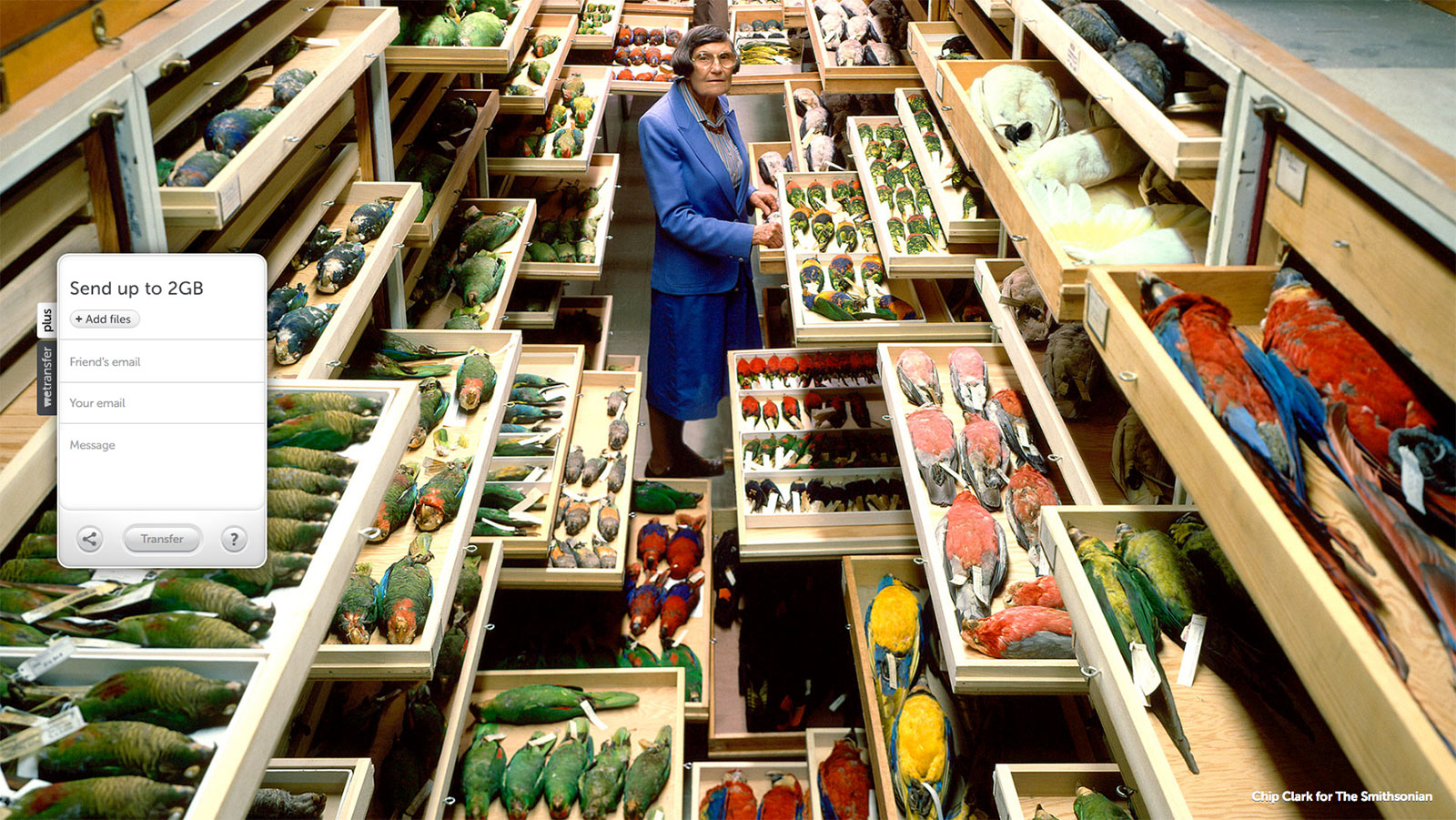Interview: Rob Alderson
The former It’s Nice That EIC discusses his new role and initiatives at WeTransfer to showcase artists at a deeper level

Helmed by kid programmer turned teen blogger turned entrepreneur Nalden, WeTransfer offers quick, effortless file-transfer service—no sign-in or account required. The minimalist interface has users coming back, but it’s the start-up’s unique use of their homepage that might keep you lingering long after the files have been delivered. One-third of WeTransfer homepage page views are given away to artists, photographers, designers, musicians, illustrators and even organizations to help showcase and promote their work (the remaining is used as ad space or to promote their paid premium service WeTransfer Plus). At the moment, there’s animation work by Parisian artist Ugo Gattoni, photography by Mowgli, even a downloadable folder of drum and percussion loops, kicks, snares, and vocal chops used by MeLo-X. Now, the company takes it dedication to the arts one step further to tell the stories behind the artists they feature.
Leading this effort is Rob Alderson, former Editor-in-Chief at London-based creative spotlight publication It’s Nice That. Originally leaving to pursue freelance work, he was hired by WeTransfer as Managing Editor eight months later and now oversees the selection of homepage artwork and the company’s new culture platform This Works. It’s an editorial channel, sharing more about the work WeTransfer users view and digging into interesting artists, featuring interviews and essays. Since there is a plethora of outlets who profile creatives, we asked Alderson how this initiative might differ.

How will your approach of curating the WeTransfer canvas differ from the way the company previously searched and selected artists?
The first thing to do was to to try and structure our curation a little more. I talked to lots of people both internally and externally about the kind of work we have featured in the past, what seemed to work, what we could and should do more of. From there, myself and Suzanne Tromp (the content manager) drew up a new list of criteria against which we could consider all potential work to be featured on the site. An interesting challenge for us is that with the new Culture Platform we want to find great visuals that work for the site but that have a story too.
It’s about trying to balance structure and serendipity
The next stage—actually finding great creative work—is a mixture of art and science I think. There are definitely platforms—online, in print and events/festivals—that we will make a point of keeping an eye on. And we are working internally to encourage our colleagues here—many of whom spend their days immersed in great creative work—to flag up interesting people. But I also really believe that happenstance plays an important role; the random Twitter link or the out-of-the-blue email from someone who mentions they just saw this amazing animation. It’s about trying to balance structure and serendipity.

There are a lot of places where readers can go to read artist interviews, why should they give the Culture Platform the time of day? How will it eschew formulaic Q&A templates (perhaps like this one)?
We completely understand that there are an awful lot of places people can find interviews with creatives. We aren’t trying to compete with them or become a publisher. We will do Q&As but we are looking to avoid those cliched questions that you read all over the place—”Where do you get your inspiration?” and “How did you become an illustrator?” So when we do a Q&A we might go really deep into a specific project or we might write up interviews into more interesting prose pieces.

But we will also consider ways of telling stories that have broader cultural interest. So with B D Graft’s Add Yellow, we used that as part of a wider discussion about remix culture and ownership. We aren’t under pressure to be first, to be publishing the new and the news. So we have to use that to our advantage and think carefully about what story we can tell, and what story will still be interesting in six, 12, 18 months.
From my time at It’s Nice That, working with a lot of very talented, very passionate people, I learned how important it is to set and maintain high curatorial standards and to be confident about zigging sometimes when everyone else is zagging. We have an amazing opportunity here—we do not need to attract eyeballs to fund our platform and we are already embedded in the creative community. We are not one of those brands forcing themselves into being storytellers; we were already working with great stories. Now it’s about doing justice to those stories, helping the creatives, informing and entertaining our readers and building our reputation.

What does WeTransfer gain from having an evergreen culture platform?
Supporting artists and musicians is a really fundamental part of our DNA. This new platform just takes that commitment to the next stage. We want to showcase these talented people and we can drive a lot of traffic to their websites. But now we have a space where we can tell their stories too. The work that appears as a WeTransfer background is the final step of a creative process but we believe that our users, half of whom work in the creative industries, will be interested in what went on to get to that photograph, or that track or that animation.

Today I saw the awesome future fashion designer Vera de Pont featured on a WeTransfer page. Are you actively searching for artists and creatives who might not be traditional illustrators or graphic designers?
Yeah, this is a really good point. We have featured a lot of photography and illustration in the past—which we will continue to do—but we are keen to broaden our horizons to take in more of the creative industries. Geographical scope is something we are very conscious of too. The team has long-been thinking about the best ways to identify talent from all corners of the globe but it’s something we really want to work on even more, expanding our curation and and enhancing the experience for our users, helping them to discover more and more great people.

Screenshots by Cool Hunting, image of “India” (2015) courtesy of BD Graft, profile image courtesy of Rob Alderson











